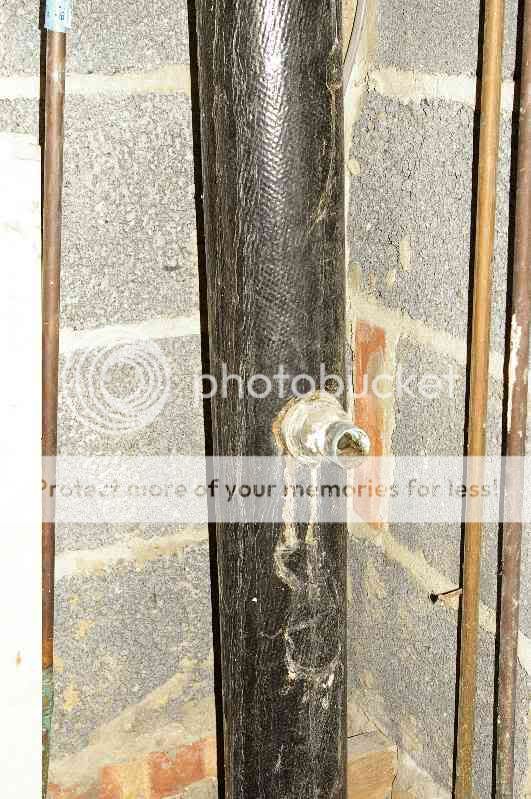Hi guys, some more advice needed please.
I am re-doing my downstairs toilet and would like a bit of advice regarding connecting the sink waste to the soil pipe. Originally the waste pipe from the sink was running along the wall and was connected to the soil pipe at about waist height which was then boxed in. However, because the waste pipe was against the wall it was a little unsightly so I now want to bury it in the wall vertically untill below the floor and then run under the floor and tee into the soil pipe.
Can anyone tell me what the soil pipe is made of (picture attached). It is black and has a sort of orange peel effect on it's surface. It's not metal or plastic and was put in when the house was built in 1964.
Then, how would I connect the 40mm waste pipe to it and what would I cut the hole with. Lastly what would be the best idea for blocking the previous sink connection hole.

Thanks for any help
Russell
I am re-doing my downstairs toilet and would like a bit of advice regarding connecting the sink waste to the soil pipe. Originally the waste pipe from the sink was running along the wall and was connected to the soil pipe at about waist height which was then boxed in. However, because the waste pipe was against the wall it was a little unsightly so I now want to bury it in the wall vertically untill below the floor and then run under the floor and tee into the soil pipe.
Can anyone tell me what the soil pipe is made of (picture attached). It is black and has a sort of orange peel effect on it's surface. It's not metal or plastic and was put in when the house was built in 1964.
Then, how would I connect the 40mm waste pipe to it and what would I cut the hole with. Lastly what would be the best idea for blocking the previous sink connection hole.

Thanks for any help
Russell





